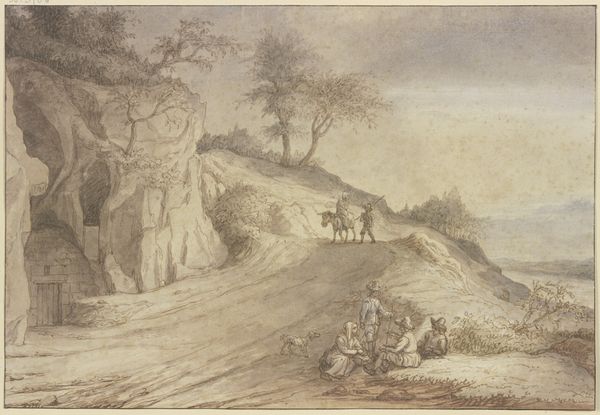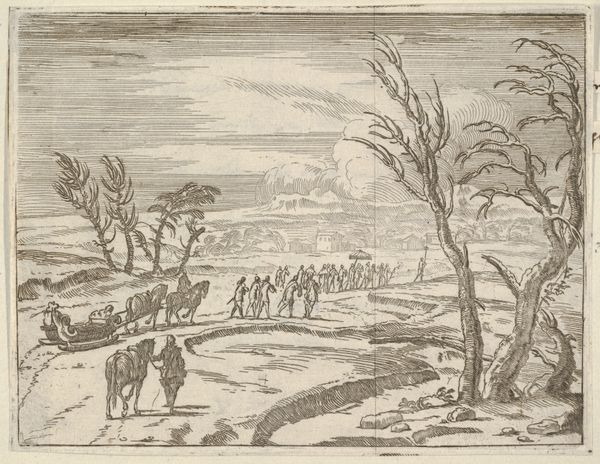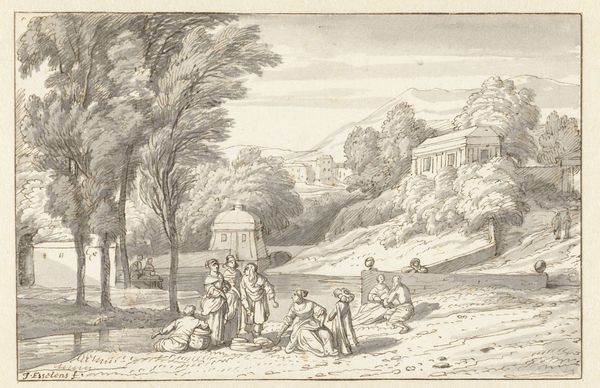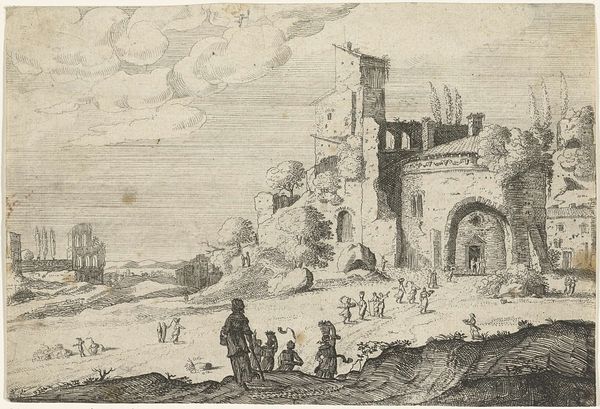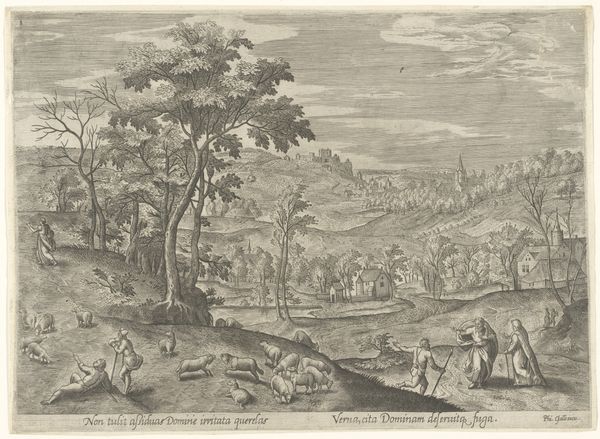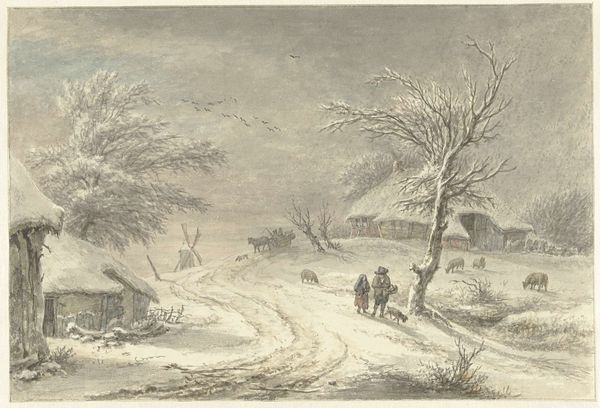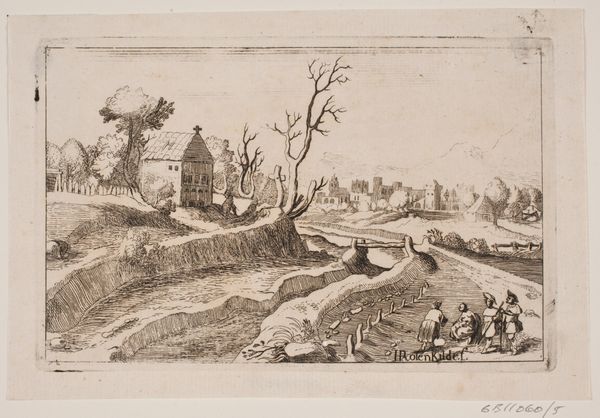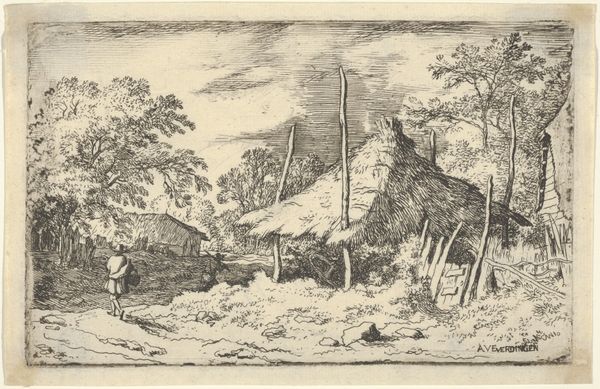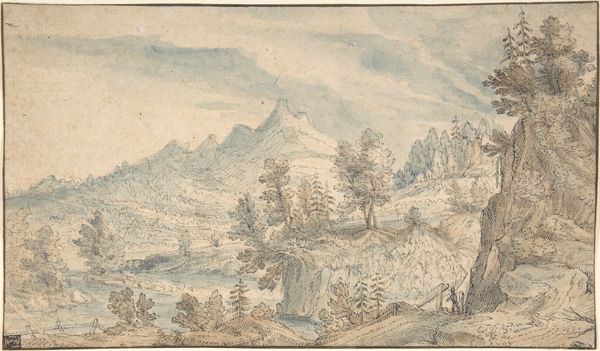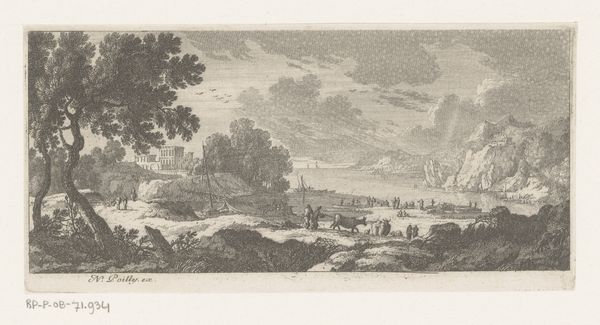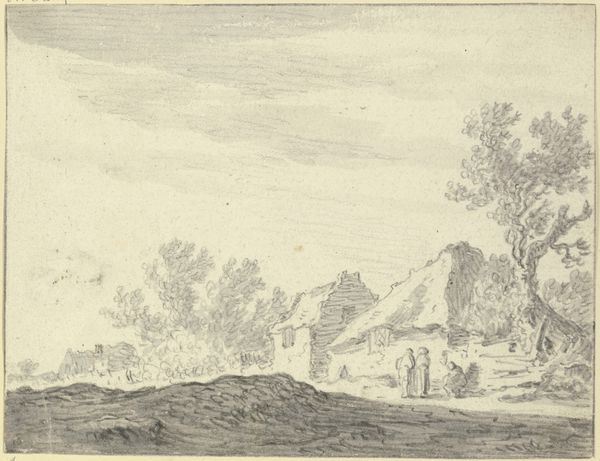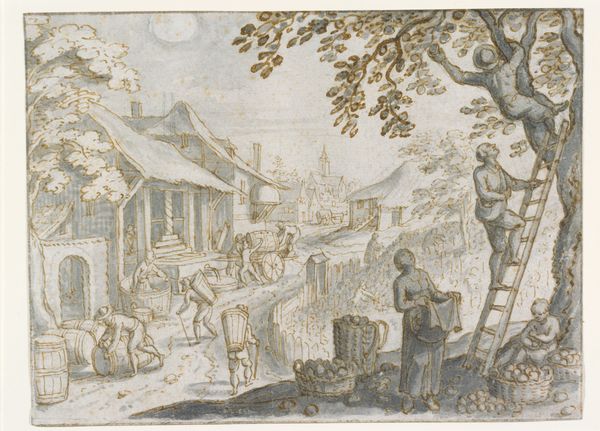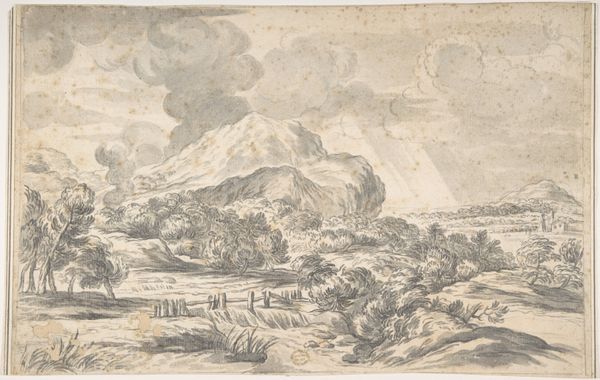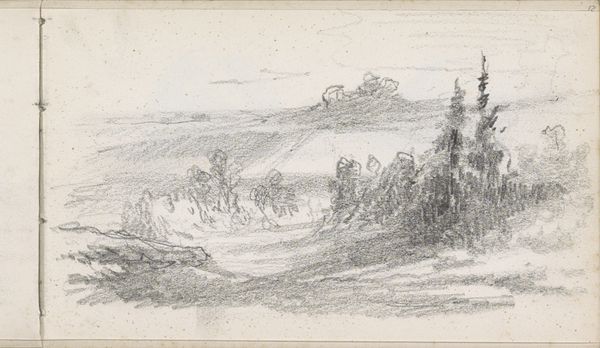
Allegory of the Months February and March 1579 - 1635
0:00
0:00
drawing, print, watercolor
#
drawing
#
baroque
# print
#
human-figures
#
landscape
#
house
#
watercolor
#
human
#
cityscape
#
watercolour bleed
#
watercolour illustration
#
genre-painting
#
watercolor
Dimensions: sheet: 6 x 8 in. (15.2 x 20.3 cm)
Copyright: Public Domain
Curator: So, here we have a rather unassuming watercolor drawing entitled "Allegory of the Months February and March". It’s attributed to Joos de Momper the Younger and dates roughly between 1579 and 1635. What jumps out at you? Editor: That muted palette. It's all browns and grays, as if the colors themselves are still hibernating. I imagine the paper texture contributes too; it looks quite rough, doesn't it? As if made of old rags. Curator: Absolutely. Momper emphasizes labor here, doesn’t he? See how much is packed into this scene! There are figures chopping wood, folks gossiping by a building, while a cart makes its way along a busy street. Editor: Right. This is clearly a depiction of people *doing* – hard physical labour to coax a living from a land slowly thawing out of winter’s grip. The trees themselves have been drastically pruned, their raw cuts evidence of someone shaping nature to their needs. I suppose that ties into this period in art history? The labor becomes beautiful by representing an actual landscape and the labor to exist with the landscape Curator: I like your point about that kind of implicit value judgment there, that only *after* it does real-world labor come to become valuable and considered beautiful. Also it has kind of charmingly unbalanced composition, though: the left side of the frame teems with village activity, but it opens to a much broader view of open land! And look: tiny figures dotting the lanes around the village itself. This city life almost feels separated, somehow? A distant dream, or threat! Editor: Perhaps it’s a reflection on the divide between rural labor and the budding urban centres, hinting at the flow of resources – or even people – from one to the other. Even the watercolor material supports the meaning! Momper would get more expensive pigments from more urban areas and apply his drawing as part of the artistic process in a natural, pastoral way. I love it. Curator: Maybe! Regardless, the drawing has that captivating stillness. Despite all the activity depicted. It has something almost dreamlike—like a distant memory filtering through a foggy landscape. And it draws our eye in such a delightful manner! There is so much humanity inside of the painting itself, no matter where the figures come from. Editor: Yes, a world in waiting, perhaps. Now that you mention, this whole picture invites reflection on human effort and what it means to persist, to simply *be* inside our collective need to make something out of anything that gets close.
Comments
No comments
Be the first to comment and join the conversation on the ultimate creative platform.
